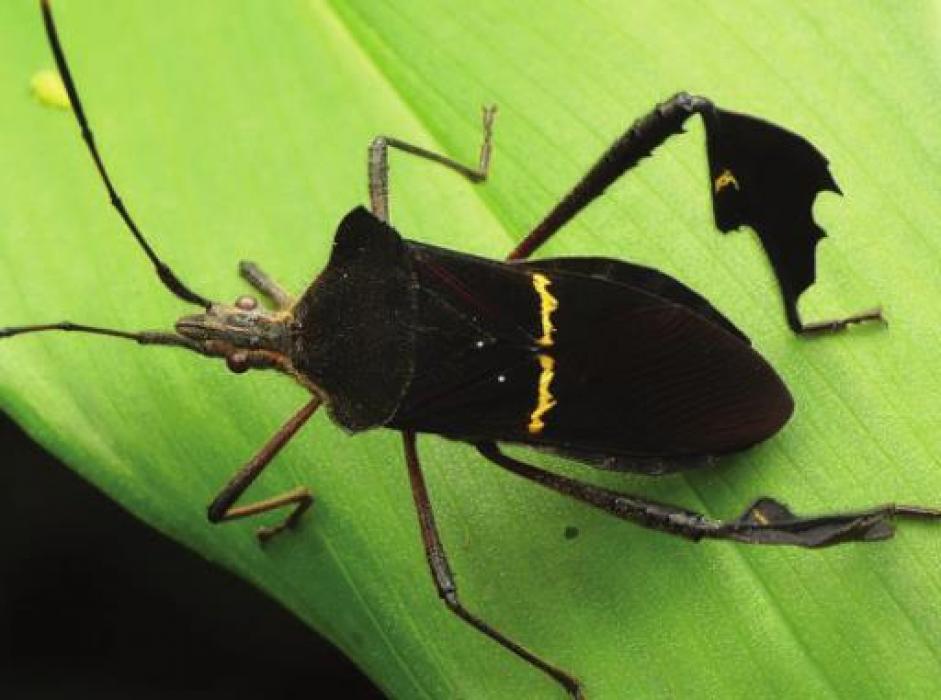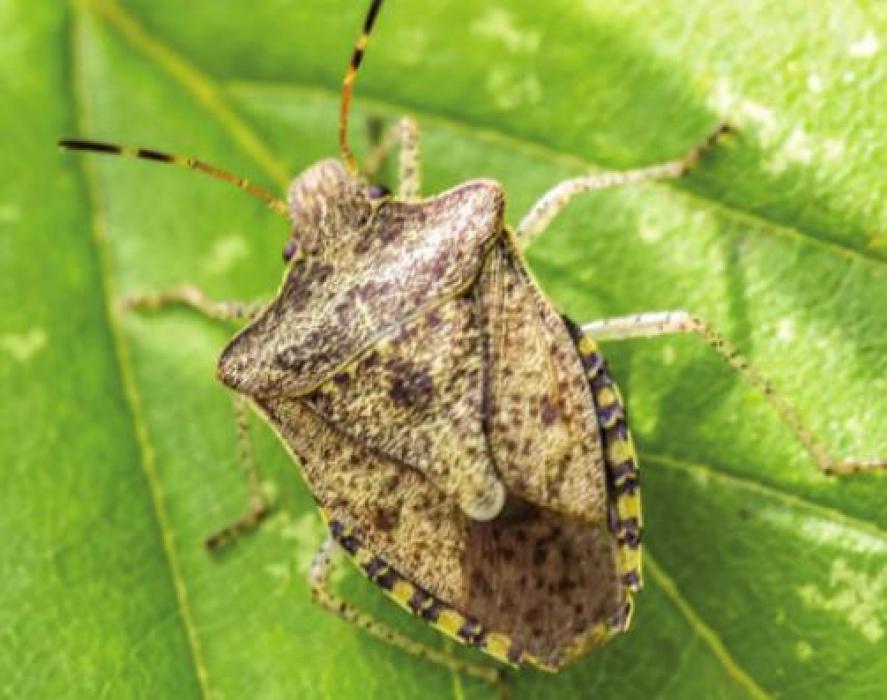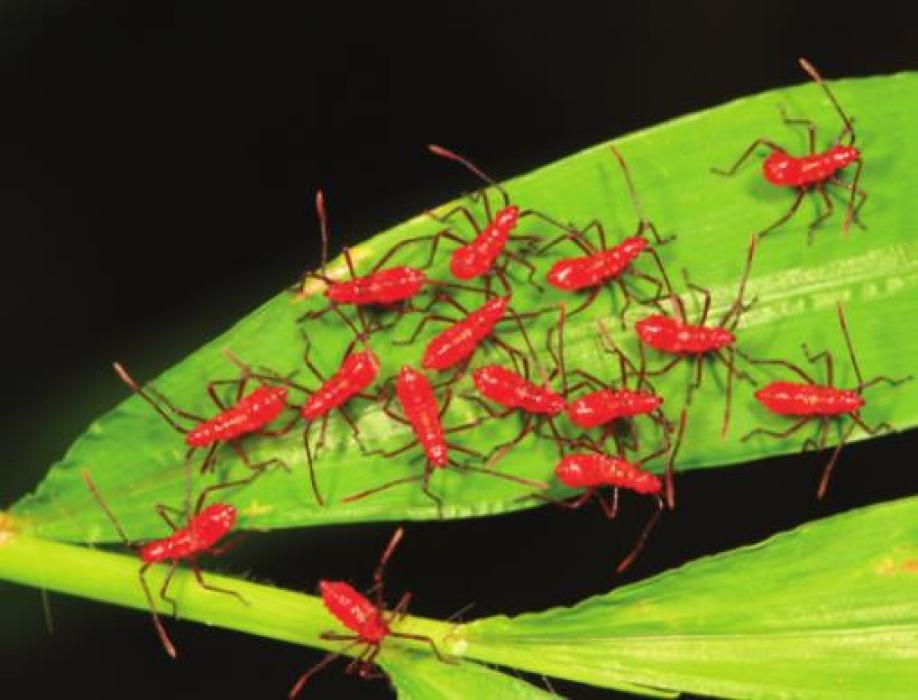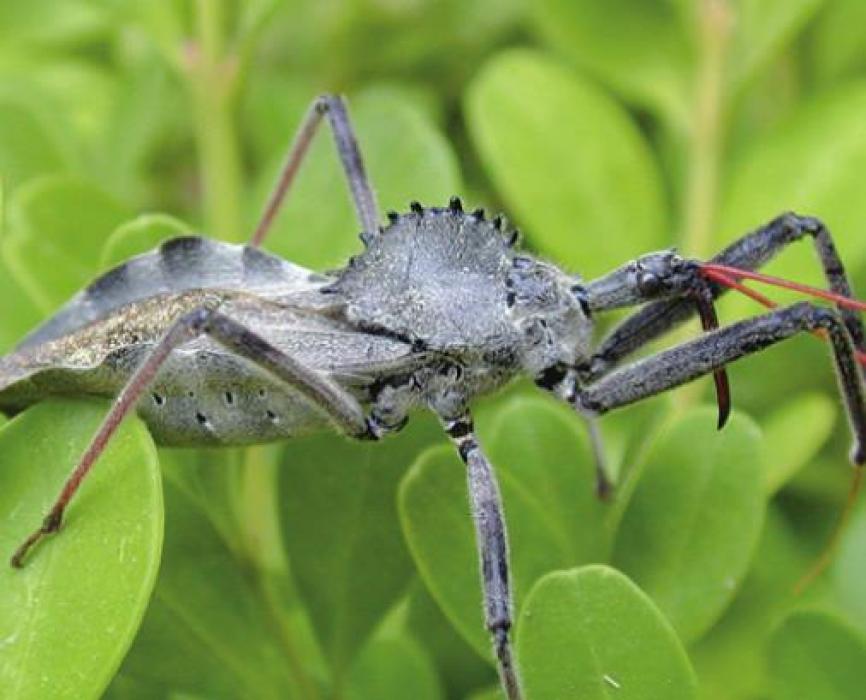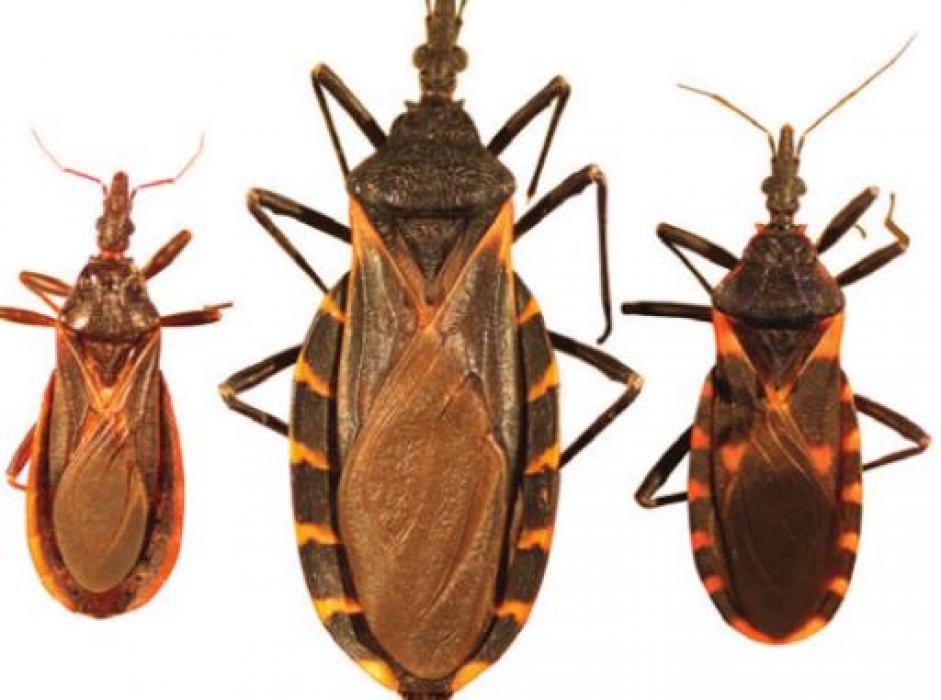Let’s talk about bugs. I mean true bugs. Stink bugs, squash bugs, wheel bugs, leaffooted bugs, assassin bugs and kissing bugs are members of the insect order Heteroptera. They all look similar. Many of them can cause problems in the garden, some worse than others. Let’s get to know these guys and how you can control them without dangerous chemicals.
I’ll start with the pests. Of all the ones I mentioned, I tend to see leaf-footed bugs the most in my garden. The adults and the nymphs are pests. They feed by sucking juice from fruits, vegetables, stems and foliage. They introduce and spread diseases throughout the garden. Their feeding habits often blemish fruit and vegetables.
The adults are dark brown and look like a long stink bug. The nymphs have redish-orange bodies with dark legs. As the name implies, the feet of the adults look sort of like plant leaves.
Leaf-footed bugs are easily controlled with orange oil spray. Simply mix two ounces of orange oil and a drop or two of Dawn dish soap into a gallon of water. Mix well and apply to infested plants with a pump-up spray.
Squash bugs look similar to leaf-footed bugs but don’t possess leaf-looking feet. Also, the prey primarily on squash, cucumbers and related crops. Their red eggs are typically attached to the bottom side of leaves. The nymphs look like a small version of the adult. Adults and nymphs are typically dark grey or brown in color.
Like leaf-footed bugs, they suck juices from plant material, causing leaves and stems to whither and die. They also spread disease from plant to plant. In my experience, they are much harder to control than leaf-footed bugs. Orange oil mixes don’t seem to work as well.
Try planting pink petunias around squash and cucumbers to repel squash bugs. It sounds crazy, but I did this last year and it seemed to work. I forgot to plant pink petunias this year and I am noticing more squash bugs.
Just about everyone knows about stink bugs. Like most gross young boys, when I was a kid I used to crush them and make people smell my fingers. These small shield-shaped bugs can be brown, green, or grey. Some species have markings. They all stink when you crush them.
Stink bugs attack just about everything in the garden from tomatoes to okra to peach trees to green beans. I hear they can be a serious problem for cotton farmers as well.
Like their relatives the squash bugs and lea-footed bugs, stink bugs feed by sucking juices from plants. Heavy infestations can cause serious blemishes and scaring in fruits, especially tomatoes. Light infestations can be controlled by manual picking. If you don’t want to crush them and get stinky, you can drop them in a jar of rubbing alcohol.
Heavy infestations of stink bugs can be controlled with oil-based sprays. I use a product made by Bonide called All Seasons Horticultural and Dormant Spray Oil. Most garden centers carry this product. Other brands of oil-based sprays can scorch plants if applied during the summer. Bonide claims the product can be used any time of year. Regardless, I would not use it on an especially sunny and hot day.
I have heard of people controlling all of these bugs with a cordless shop vacuum. Hunt them down in the garden and suck them up with the shop vac. I’ve never used the vacuum method. If it works for you, please let me know.
Don’t mistake leaf-footed bugs and squash bugs with their beneficial relatives, the wheel bugs and assassin bugs. There are many species of wheel bugs and assassin bugs, and they come in different colors. Some are dark grey or brown and look very similar to leaf-footed bugs. They appear more armored than leaf-footed bugs, and their bodies flare more behind the wings. Wheel bugs are generally larger than assassin bugs.
Wheel bugs and assassin bugs are beneficial because they don’t feed on plants. Instead, they feed on other insects, including leaf-footed bugs.
Assassin bugs in the genus Triatoma are known as “kissing bugs’’ due to their tendency to bite people and other animals on the lips. These bugs have a flat body and lack the leaf-looking feet of their relatives. They are black or dark brown with a striping pattern around the rear of their abdomen. The stripes are yellow, red or orange, depending on the species.
Kissing bugs get a bad reputation because they can potentially transmit Chagas Disease. This tropical parasitic disease can lead to chronic pain and a host of serious complications. Despite their potential harm, kissing bugs are considered beneficial in the garden. Like wheel bugs and other assassin bugs, kissing bugs prey on a variety of garden pests.

